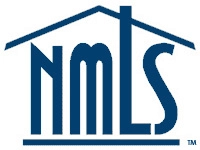Reverse Mortgages
Understanding reverse mortgages can be daunting. With so much conflicting information out there, it’s no surprise that many find this topic confusing. This blog aims to clear up that confusion by providing ten essential facts about reverse mortgages, offering balanced insight whether you’re considering one or exploring other options.
Reverse Mortgages Use Your Home’s Equity
A reverse mortgage allows homeowners to borrow against their home equity. Essentially, you receive money from the lender, which is later recouped when the home is sold, if the owner moves, or upon their passing.
Choose How to Receive Your Money
When taking a reverse mortgage, you can opt to receive the funds as a lump sum or in monthly installments. A lump sum might work better for large expenses, while monthly payments can be ideal for day-to-day living costs.
Types of Reverse Mortgages
There are three types of reverse mortgages: home equity conversion mortgages (HECMs), single-purpose reverse mortgages, and proprietary reverse mortgages. The HECM is the most popular and versatile option, usable for any purpose.
You Still Need to Pay Property Taxes and Insurance
It’s crucial to note that reverse mortgages do not eliminate the need to pay ongoing property expenses like taxes and insurance. Lenders require borrowers to keep the home in good condition and stay current on these payments.
Your Home Must Be Your Primary Residence
One key requirement is that the home being borrowed against must be your primary residence. Long absences or moving away could trigger repayment earlier than expected.
You Will Still Own Your Home
Contrary to a common misconception, taking out a reverse mortgage does not transfer your home’s ownership to the lender. You remain the titleholder.
No Monthly Mortgage Payments
One of the main advantages of a reverse mortgage is the lack of monthly mortgage payments, which can be particularly beneficial for retirees or those on a fixed income.
Federal Debt Delinquencies Can Disqualify You
Being delinquent on federal debts, such as unpaid taxes or federal loans, can prevent you from qualifying for a reverse mortgage.
You Must Have Paid Off (or Nearly Paid Off) Your Home
To qualify for a reverse mortgage, you usually need to have substantial equity in your home, meaning it’s either fully or nearly paid off.
Age Requirement: 62 Years or Older
Reverse mortgages are only available to those aged 62 and older. If you’re younger, you might want to look into alternatives like a home equity line of credit (HELOC).
Reverse mortgages can be a helpful tool for some, but understanding the key facts is essential before moving forward. Now that you have a clearer grasp of how reverse mortgages work, you can make a more informed decision. Get in touch today with a financial advisor or mortgage specialist to see if a reverse mortgage is the right option for your situation.














